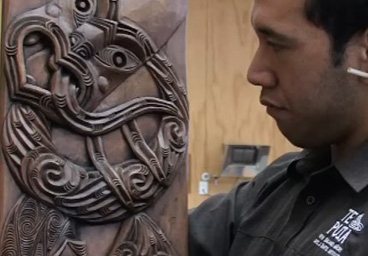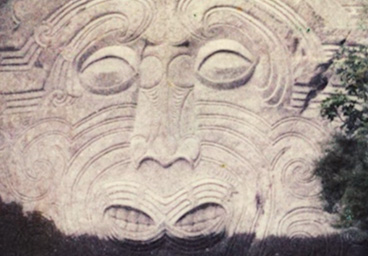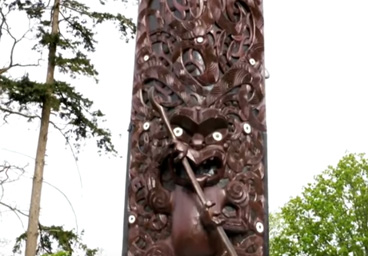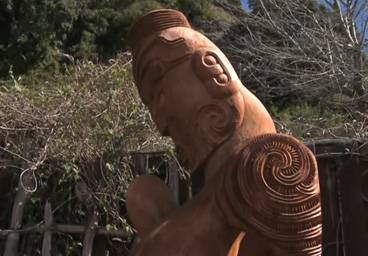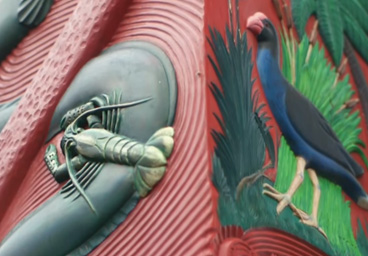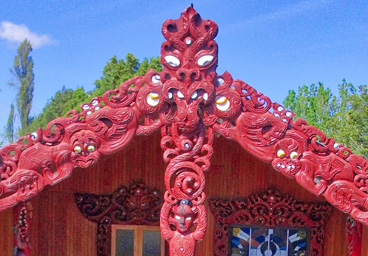LINKS
Whakairo - Māori Carving
 The sound of wooden mallets pounding the chisel, made from the finest swiss steel. Wood chips curl up and break away falling to the floor like snowflakes. Bob Marley music playing in the back ground is what I remember as a former student of Fairfield college, Hamilton, New Zealand. This is where I spent most of my time during the many years it took to build the fully carved wharenui meeting house called Te Iho Rangi.
The sound of wooden mallets pounding the chisel, made from the finest swiss steel. Wood chips curl up and break away falling to the floor like snowflakes. Bob Marley music playing in the back ground is what I remember as a former student of Fairfield college, Hamilton, New Zealand. This is where I spent most of my time during the many years it took to build the fully carved wharenui meeting house called Te Iho Rangi.
Whakairo is the oldest written form of Māori language steeped in tradition and lore. Comonly known as the art of Māori carving on wood, carving is also done on stone, bone and contemporary mediums such as Stainless Steel and custom board. Many meeting houses, schools, office buildings and churches highly ornate and decorative have been fully carved by well known Māori master carvers in New Zealand like Paki Harrison.
This ancient artform is very much alive and thriving in the carving schools of today. How ever with fewer young people coming in to fill up the ranks, there is the threat the artform could be in danger in the future. As long as there are institutions to help stimulate and provide a fertile ground of learning. Whakairo will be preserved.
Māori carving comes in many shapes and forms not just in traditional carving but in the use of carefully ornate carvings of 21st keys, tokotoko - walking sticks and more. The types of wood comonly used is the native kauri and totora. These are softwoods and have a natural preservative. How ever due to native wood being avallable in short supply, an alternative used is custom board, easy to carve and a cheaper option for the budget minded artist.The other is black maire a hard wood used to make Māori ceremonial weapons like taiaha or patu.
There are schools that teach Māori carving such as Te Wananga Whakairo Rakau o Aotearoa however numbers are limited. Whakairo is only a small part to learning . Students are taught the many techniques and skills required to express Māori concepts and kōrero (narratives) through Māori carving with a wide range of tāonga Māori(treasures) made during their tenure with in a period of three years. students then go on to further their skills.
